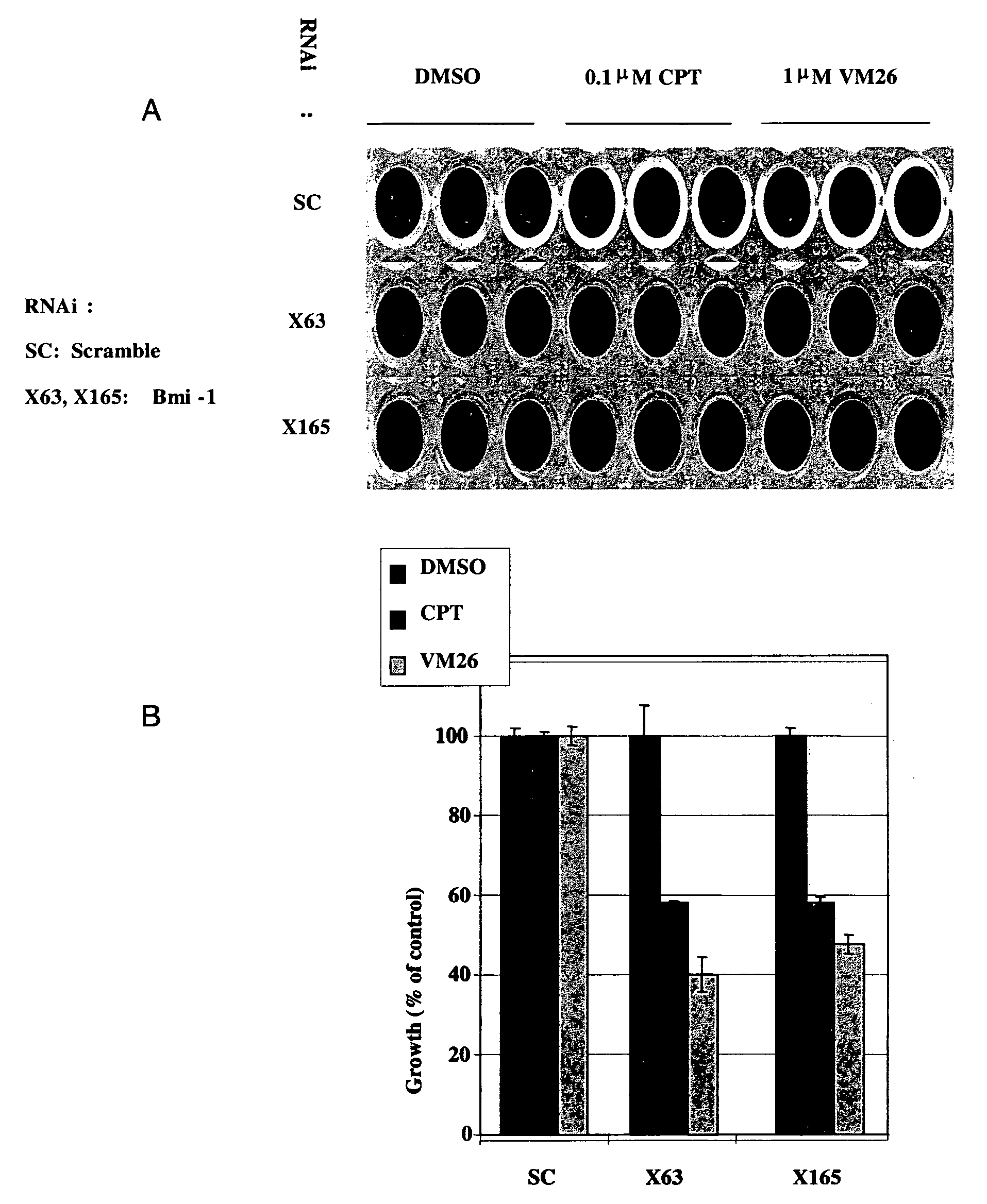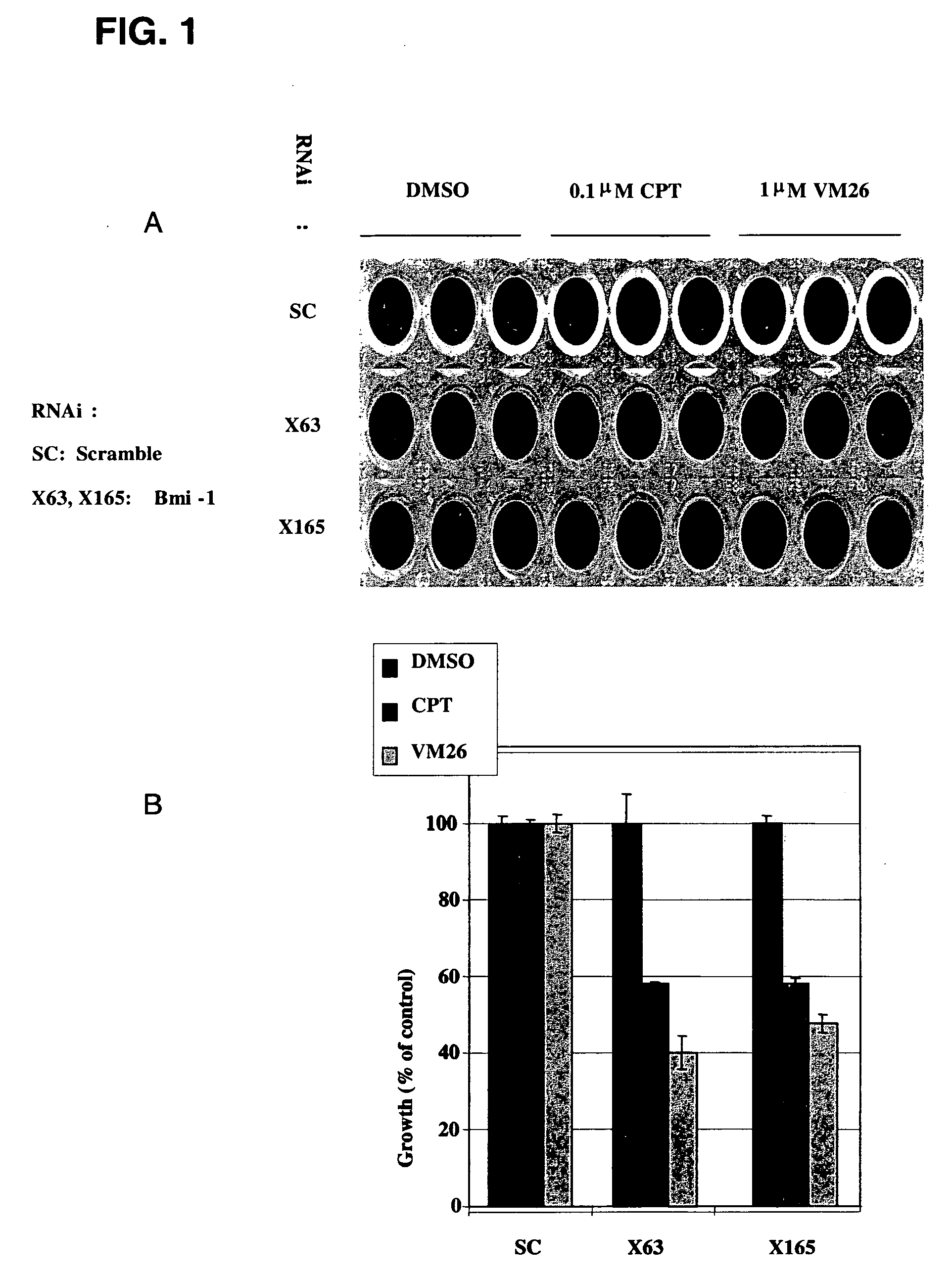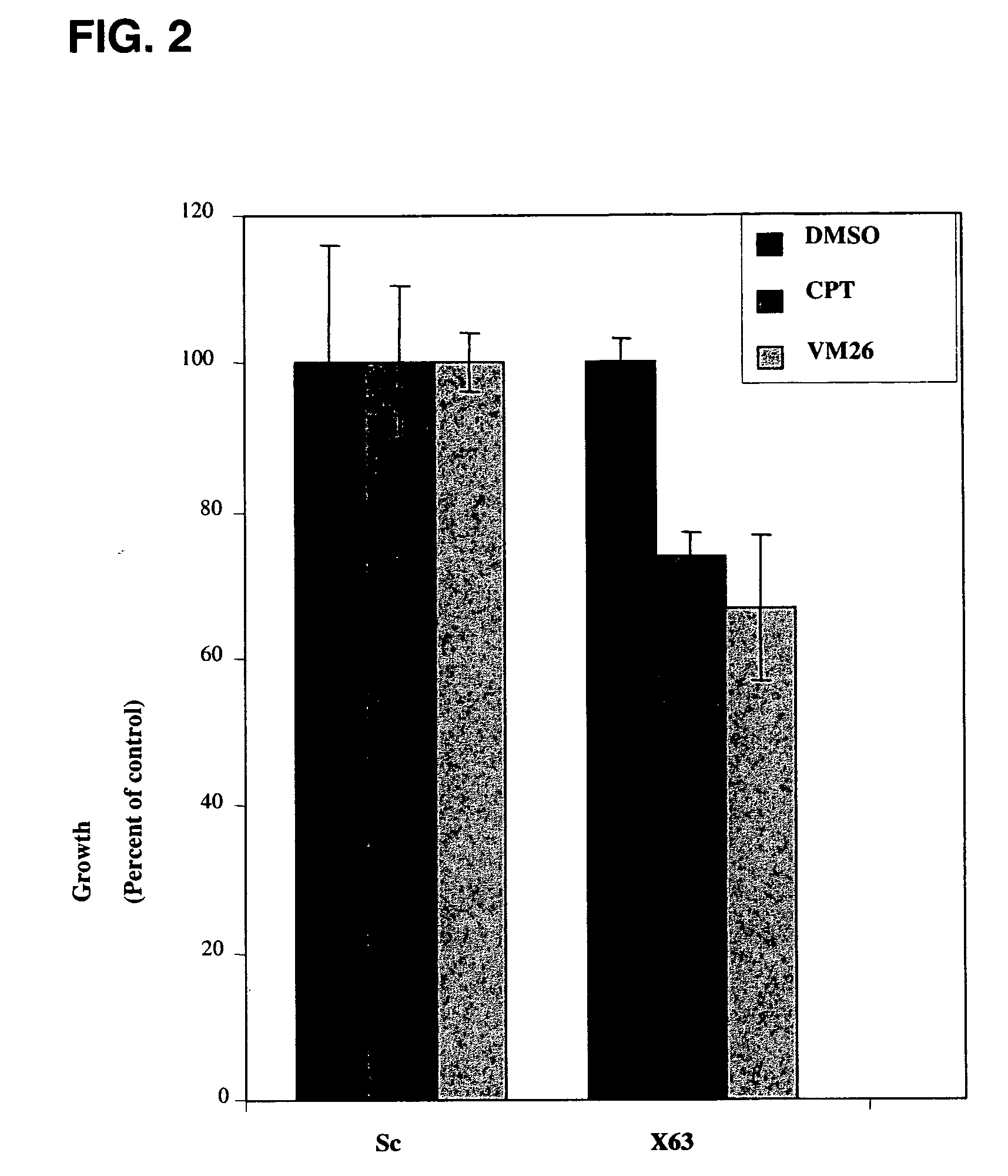Methods for enhancing the therapeutic efficacy of topoisomerase inhibitors
a topoisomerase inhibitor and therapeutic efficacy technology, applied in the field of methods for enhancing the therapeutic efficacy of topoisomerase inhibitors, can solve the problems of cell death, cell cycle arrest and cytotoxic dna lesions
- Summary
- Abstract
- Description
- Claims
- Application Information
AI Technical Summary
Benefits of technology
Problems solved by technology
Method used
Image
Examples
example 1
Silencing of a E3 Ubiquitin Ligase Increases Drug Toxicity
[0305]RNAi oligomers were designed that specifically targeted 77 candidate genes. Two RNAi oligomers per gene were tested through a toxicity assay in HeLa cells under the assumption that silencing of a critical E3 ubiquitin ligase would increase drug toxicity. The oligomers were obtained from IDT DNA (IL USA). The screen was carried out in the presence of sub-toxic concentrations of CPT (Camptothecin, Sigma, Israel), a TOPI drug, and VM26 (Teniposide, Alexis Biochemicals Corp., CA, U.S.A.), a TOPII drug. HeLa cells were transfected with the RNAi oligomers using the SaintRed reagent (Synvolux Therapeutics, B.V., NL) according to the manufacturer's instructions. 32 hours after transfection, the cells were treated with sub-toxic concentrations of about 0.1 μM CPT or about 1 μm VM26 for an additional 16 hours, after which time the media was changed. The viability of the cells was determined 24 hours later using AlamarBlue reagent...
example 2
siRNA Silencing of Bmi1 Stabilized TOPI and TOPIIα Degradation
[0310]HeLa cells were transfected with the Bmi1 X63 and X165 RNAi oligomers, or a scrambled RNAi oligomer using the conditions described in Example 1. Forty-eight hours post-transfection, the cells were treated for 0, 3, or 5 hours with 100 μM VM26, or for 0, 4.5 or 6 hours in the presence of 25 μM CPT. Certain of the scrambled oligomer-treated cells were treated with 25 μM of the proteasome inhibitor, MG132 (Sigma, Israel). The cells were harvested, alkaline extracted and treated with S7 DNAse (Roche, Germany) to release TOPII from the DNA.
[0311]The amounts of TOPIIα, TOPIIβ and TOPI were then assayed by immunoblot with specific anti-TOPII and anti-TOPI antibodies (Santa Cruz Biotechnology, Inc., CA. U.S.A.) (FIGS. 3 and 4). The general protocol for Western analysis was as described previously. Briefly, nitrocellulose membranes were blocked for 0.5-1 hour with 5% non-fat milk in TBS-T (TBS supplemented with 0.5% [v / v] Tw...
example 3
siRNA Silencing of Bmi1 Stabilized TOPIIα-DNA Degradation
[0313]HeLa cells were transfected with control (scrambled) or X63 Bmi1 RNAi oligomers as described in Example 1. Twenty-four hours after transfection, the cells were treated for various times with DMSO, 100 μM VM26 and 25 μM MG132 as indicated in FIG. 5.
[0314]The cells were harvested, and genomic DNA was isolated and separated on a cesium-chloride column as previously described (Desai, S. D., et al., Cancer Res., 2001. 61(15): p. 5926-32). Briefly, cells were lysed in Sarkosyl lysis buffer containing 1% sarkosyl in 10 mM Tris-HCl (pH 7.5) and 1 mM EDTA. The cells were then passed through an 18-gauge needle 5 times, and the resultant cell extract was laid on top of a 1.5 g / ml cesium-chloride density centrifugation column and centrifuged for ˜5 hours at ˜438,000 g. This step was designed to resolve the DNA from any free proteins, such that the covalent complexes containing topoisomerase and genomic DNA pelleted in the column alo...
PUM
| Property | Measurement | Unit |
|---|---|---|
| temperature | aaaaa | aaaaa |
| ionic strength | aaaaa | aaaaa |
| pH | aaaaa | aaaaa |
Abstract
Description
Claims
Application Information
 Login to View More
Login to View More - R&D
- Intellectual Property
- Life Sciences
- Materials
- Tech Scout
- Unparalleled Data Quality
- Higher Quality Content
- 60% Fewer Hallucinations
Browse by: Latest US Patents, China's latest patents, Technical Efficacy Thesaurus, Application Domain, Technology Topic, Popular Technical Reports.
© 2025 PatSnap. All rights reserved.Legal|Privacy policy|Modern Slavery Act Transparency Statement|Sitemap|About US| Contact US: help@patsnap.com



